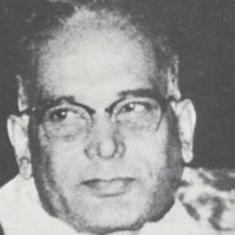“I’ve been serving my sentence. So why persist? Is there any reason to keep punishing me? I don’t see it,” said Maria Sharapova in her interview with the French newspaper Le Parisien, a couple of weeks ago.
Coming at such a time as it did, with the end of her 15-month ban from the professional Tour drawing closer, the Russian’s outburst was then on expected lines as if she were trying to come up with a unique battle cry.
Sharapova and her team arriving for their booking at 11am on indoor court 2 at the 125-year-old Sportverein Sillenbuch (SVS) club yesterday. pic.twitter.com/FX5OazGZIg
— Stuart Fraser (@stu_fraser) April 24, 2017
The flip-side of the wild card debate
It's just embarassing. Francesca Schiavone won't be able to play Rome, in her last year. I'm done. Tennis is not sport anymore. Business.
— Bernarda Pera Fans (@GabriCogliandro) April 12, 2017
Since the time, it was announced that the former world No 1 would be receiving a wild card at the Stuttgart Open, a decision that was followed by the Madrid and Rome Opens, the chatter involving Sharapova went back to her being an offender of the sport. It was an unnecessary throwback to the past after she had acknowledged her failed drug test for Meldonium during the 2016 Australian Open.
It was also stymieing that the timeline of Sharapova’s impending comeback was inundated with vociferous protests against these wild cards, led from the forefront by several of her colleagues and rivals. Especially given the long months of deliberations that ensued in ironing out the actualities of Sharapova’s actions, first by the Independent Tribunal and, later, by the Court of Arbitration of Sport.
A common refrain among these players, whose stances are against the Florida native has been that other well-deserving players have – and will – lose out on their opportunity to make a much-needed cut into the main draw by way of wild cards. The obvious disparity between Sharapova and other such players, indeed, hits harder in light of the fact that a former Major champion like Francesca Schiavone, who is ranked right on the rim of the top-100, failed to receive a wild card from the Rome Open’s organisers – both in the main draw as well as in the qualifiers – in what is her final year on the WTA circuit.
At the same time, it also bears acknowledgement that Sharapova’s wild card recipiency is backed by the WTA norms. Moreover, the arguments lined up against her also turn flimsy considering that her wild card doesn’t include her bypassing the initial rounds of a tournament, or even being guaranteed a place on the podium as a champion for that matter. From that perspective then, Sharapova, who has no backup of WTA points in her kitty, is starting her career afresh as her fellow professionals keep insisting she ought to do.
Is Maria Sharapova really the poster child of tennis’ worst?
In the wave that crested in Sharapova’s downfall as one of tennis’ elite, there were a couple of prominent offshoots that emerged from within the International Tennis Federation’s workbook.
One was on the subject of Therapeutic Use Exemption, a rule that allowed players hobbled by medical conditions to use substances – albeit in a controlled manner, and as prescribed medically – which were otherwise banned by the World Anti-Doping Agency. And the other was in the functioning of silent bans, where players who were suspended provisionally by the ITF for failing their drug tests could conceal their suspension from being made public until an official ruling was announced, either clearing them, or suspending them for a definite period of time.
The reigning No 1 doubles player, Bethanie Mattek-Sands’ application for a TUE for Dehydroepiandrosterone was rejected by the ITF, WADA and then by the CAS upon her appeal in 2016. It also raised concerns about whether all TUEs were properly mandated by concerned physicians of the players.
Likewise, Mattek-Sands’ compatriot Lepchenko’s serving of a silent ban for four months in the same time-frame as Sharapova, and for failing her drug test for the same drug as Sharapova necessitated the ITF to put an end to its long-standing practice of utilising silent bans a way to keep the player camouflaged from deeper introspection.
In that, in a way, it was Sharapova’s decision to go public with her so-perceived misdemeanour that forced the ITF to step forward and institute a change. To those then still pondering about the 30-year-old’s choices, it was her way of accepting responsibility – as she put it – and the consequences that came with it, regardless of how long she may have had to wait out.
She is almost bereft of support, with some bizarre rationale offered by players to not extend a show of strength to her. Nonetheless, she is being championed by certain select band of players, headlined by veteran Venus Williams.
“I think the bodies have made their decision and she has an opportunity to come back and continue her career,” said the 36-year-old. “I think she should be able to continue that. In the greater scheme of things, with words being mouthed cacophonously, it doesn’t say much. But, it does say enough to welcome an ostracised and condemned co-worker who, in spite of her seeming confidence will still be under tremendous pressure to not knuckle-under.










